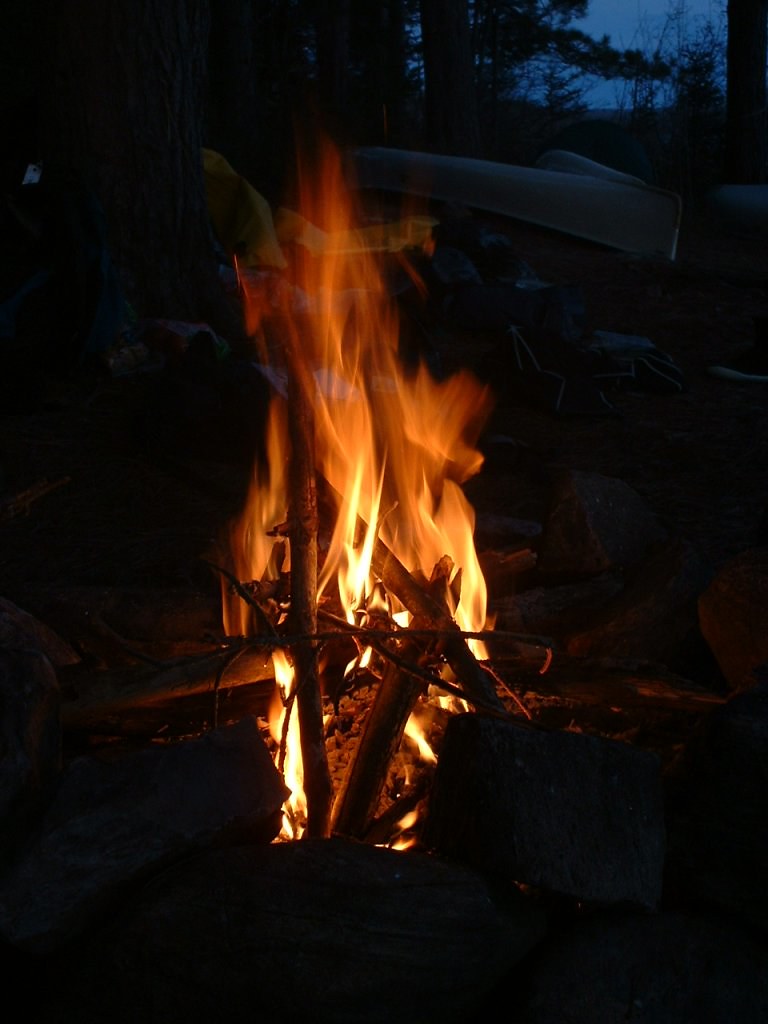Photo by Museums Victoria on Unsplash
My earlier post, Fanning the Flame, presented the metaphor of a campfire to describe the learning process. The wood of the campfire is the curriculum. It is required for the fire, but on its own emits little energy. The flames represent the learning that occurs when the interaction between student and curriculum begins. The wind and the oxygen that it carries are like the influence of the teacher on the learning and the learner. I conclude my post by stating that the curriculum is only the starting point that should be used to spark interest, curiosity and wonder. Now, if I look back to my metaphor of a fire, it is challenging for me to limit curriculum to the wood. It is more like the collective of the wood, fire, air and my updated metaphor also includes details of how the campfire is situated, perceived and experienced in its environment.
My understanding of curriculum still rests on the foundation of a traditional definition of “curriculum”, one that is deeply rooted in political purpose(s). For me, curriculum has always been the document presented by the government of BC, which serves as a type of contract outlining the job requirements for educators. The ‘old’ curriculum was presented in 1989 and drew from the Sullivan Commission (a 1988 document titled “A Legacy for Learners: Report of the Royal Commission on Education”, organizing prescribed learning outcomes in integrated resource packages). The new curriculum rolled out in 2016 and focuses on personalized learning using a concept-based competency-driven framework, including ‘Big Ideas’, ‘Curricular Competency Learning Standards’ and ‘Content Learning Standards’. Two valuable resources I found are 5 Key Changes in BC’s New K-12 Curriculum: What are the Implications for Post Secondary? which outlines the changes of the new curriculum and Curriculum Timeline: BC’s “new” curriculum which reviews curriculum changes in BC over the past 90 years. I found the latter document particularly interesting when I remembered that Tyler’s rationale was introduced in 1949, and yet clear objectives were evident in curriculum from the 30’s.
Two questions were posed early in our study of curriculum in EDCI 532: “Is curriculum an object, an intention, or an action?” and “should curriculum be about self, society, diversity, sustainability, or something else?” Questions such as these started to challenge my thinking of curriculum as document, which restricts the curriculum to what is taught. I have to admit I experienced a certain level of frustration as dismissing this understanding appeared to serve no purpose. The BC Curriculum will not change its language to conform to my philosophical meanderings. And besides, teachers already understand and acknowledge the limitations of the word when we discuss the hidden curriculum or the omitted curriculum. I particularly appreciated Lawrence Weston’s statement: “What kids take away is their own personal curriculum,” and then there is Dave Cournier’s statement: “Community is Curriculum.” Cournier states his goal for each student is
to be able to become a member of a community of knowing in the subject. Can you pass? Can you engage? Do you know how to ask questions? Do you speak the language? Can you help? We learn to become members in a community of knowing by practicing and learning together. When the community is the curriculum. (March 1, 2018)
I was relieved to learn of Ted Aoki’s perspective on curriculum and how he recognizes the tension between the lived curriculum and the planned curriculum. Fuchs (2019) summarizes Aoki nicely here:
he (Aoki) teaches us not to be drawn to either of those curriculum worlds in their extreme. Rather, by dwelling between the two curriculum worlds, educators will be able to provide the best support for their students.
Educators understand that how curriculum is put into practice is everything, and most will acknowledge that curriculum is experienced differently by every student. And so, I am challenged to defend my original metaphor restricting curriculum to the wood of the campfire. Rather, now I am considering how the campfire is situated in its environment. What is impacting it and how is it impacting the environment? Ultimately, it is the experienced and observant educator that can read the learner and the learning environment and weave the curriculum into an enjoyable and enriching experience.
I could be intentional about accepting the more traditional definition of curriculum as content, or I could choose to rest in the ambiguity of Aoki, who suggests that we live in between a lived and planned curriculum. Unfortunately, I find both of these options unsettling as neither is universally accepted. Is it the planned curriculum or the lived curriculum? Curriculum as community or the personal curriculum? The intended curriculum, the hidden curriculum, or the omitted curriculum? Or is it the curriculum as presented in the provincial document?
After learning about Marshall McLuhans-tetrad (1), I wanted to write that I believe the word ‘curriculum’ has become obsolete. Without further elaboration, the word has lost its meaning. However, such a conclusion might be the easy way out. The discussion around and about curriculum is what is most important. It is this process of exploring and questioning where meaning is made and where learning occurs. If I think too long, it still makes me a little uncomfortable accepting that there is not a universal definition of curriculum, but then I remember that learning is an experience and not a destination. This is the curriculum I will bring with me to the classroom.
References
Aoki, T. (1986). Teaching as Indwelling Between Two Curriculum Worlds. The B.C. Teacher, 65 (3), April/May.
Cournier, D. (2018, March 1) Supporting Digital Practice – Making time-for-learning. [Blog post] Retrieved from http://davecormier.com/edblog/
Fuchs, T. (2019)Dwelling between curriculum-as-planned and curriculum-as-lived in science class Canadian Teacher. Retrieved from https://canadianteachermagazine.com/2019/01/19/dwelling-between-curriculum-as-planned-and-curriculum-as-lived-in-science-class/




 The wood of the campfire is the curriculum. It is required for the fire, but on its own emits little energy. Don’t be fooled, however. The type of wood is very important! Oak would be best for a slow and steady burn, whereas hickory burns hot and is ideal for cooking. Ash burns easily and doesn’t produce a lot of smoke and Cedar produces a small flame but intense heat. And of course, the type of wood you use needs to be available and dry. To create the perfect fire will require knowledge and planning to be sure!
The wood of the campfire is the curriculum. It is required for the fire, but on its own emits little energy. Don’t be fooled, however. The type of wood is very important! Oak would be best for a slow and steady burn, whereas hickory burns hot and is ideal for cooking. Ash burns easily and doesn’t produce a lot of smoke and Cedar produces a small flame but intense heat. And of course, the type of wood you use needs to be available and dry. To create the perfect fire will require knowledge and planning to be sure!